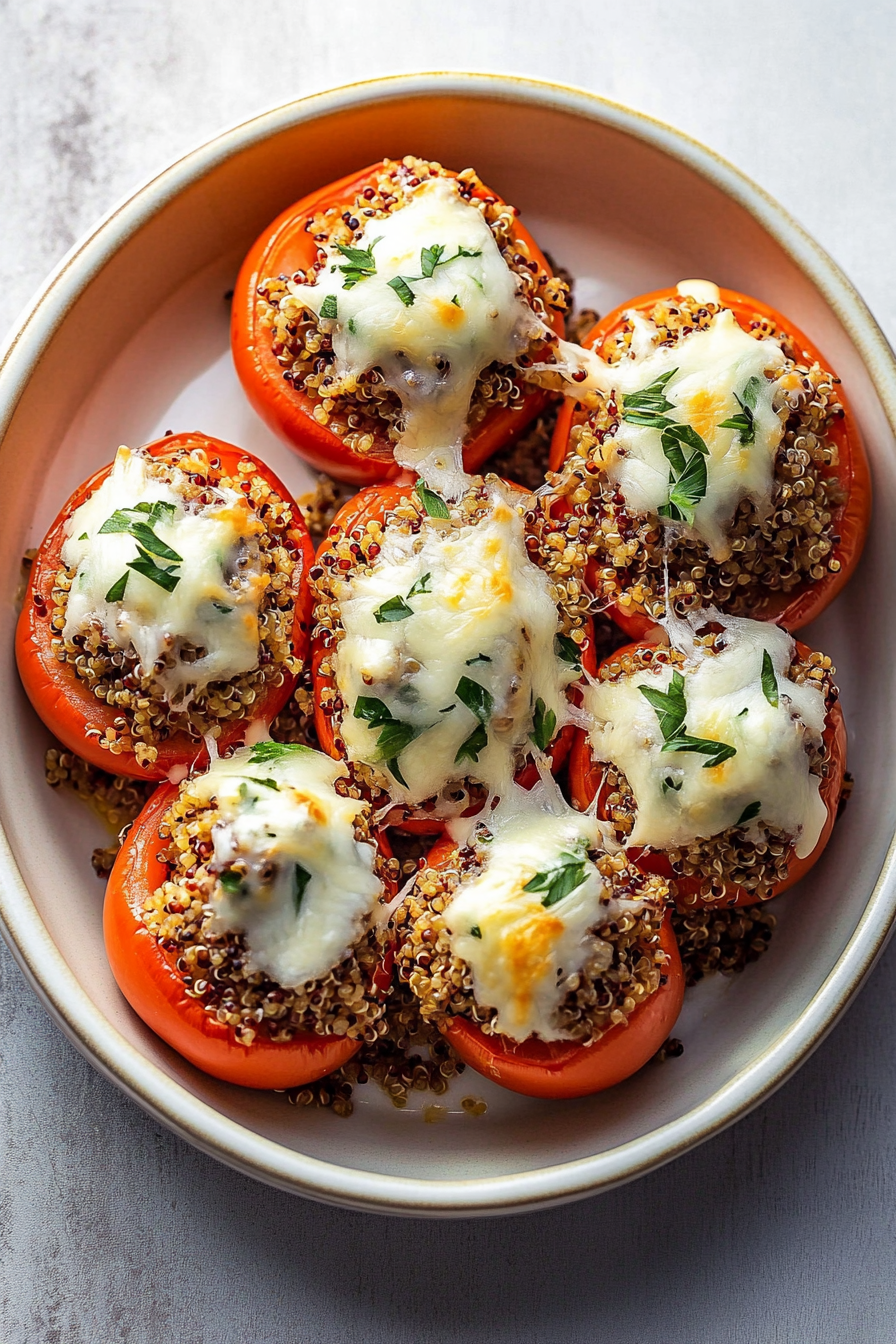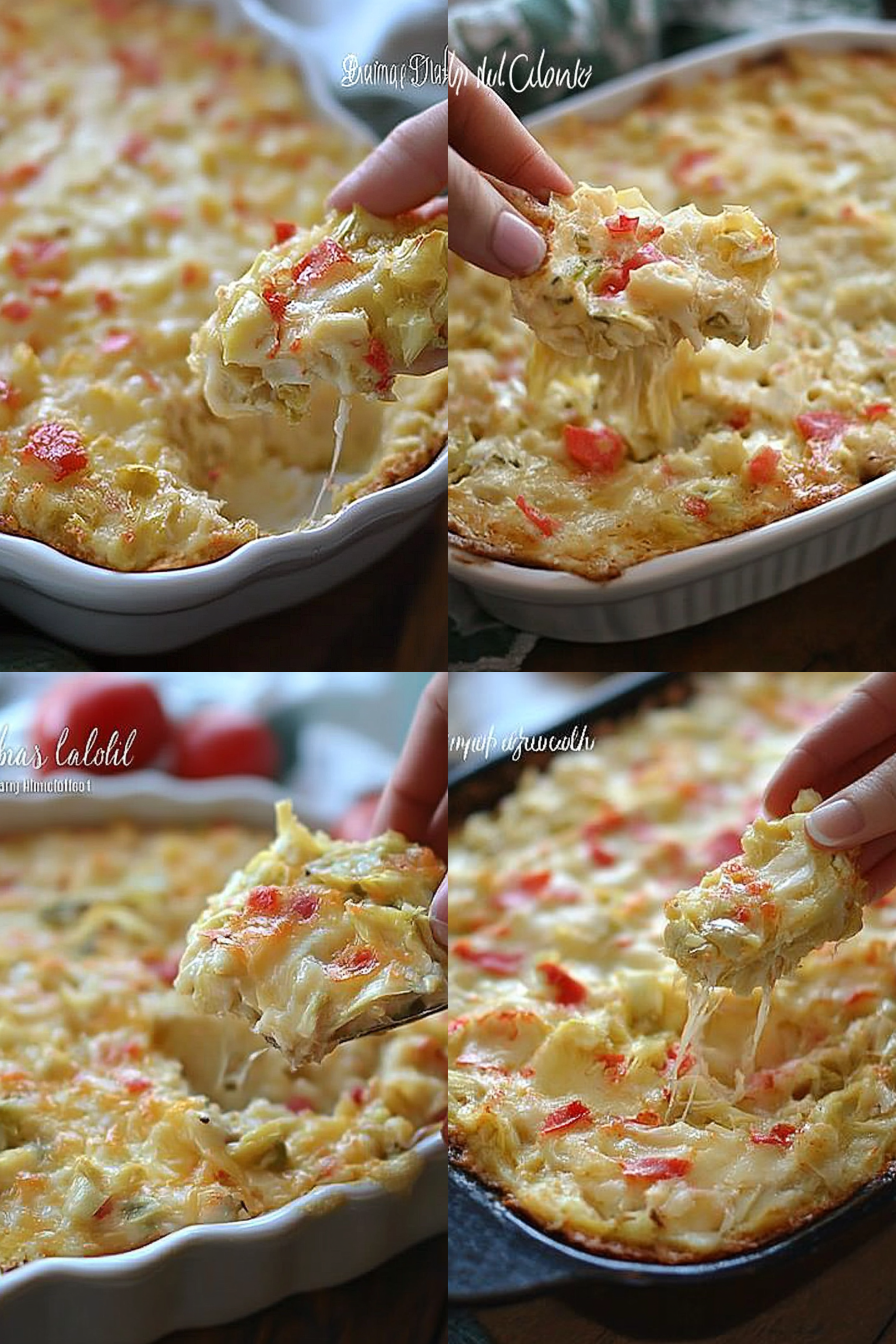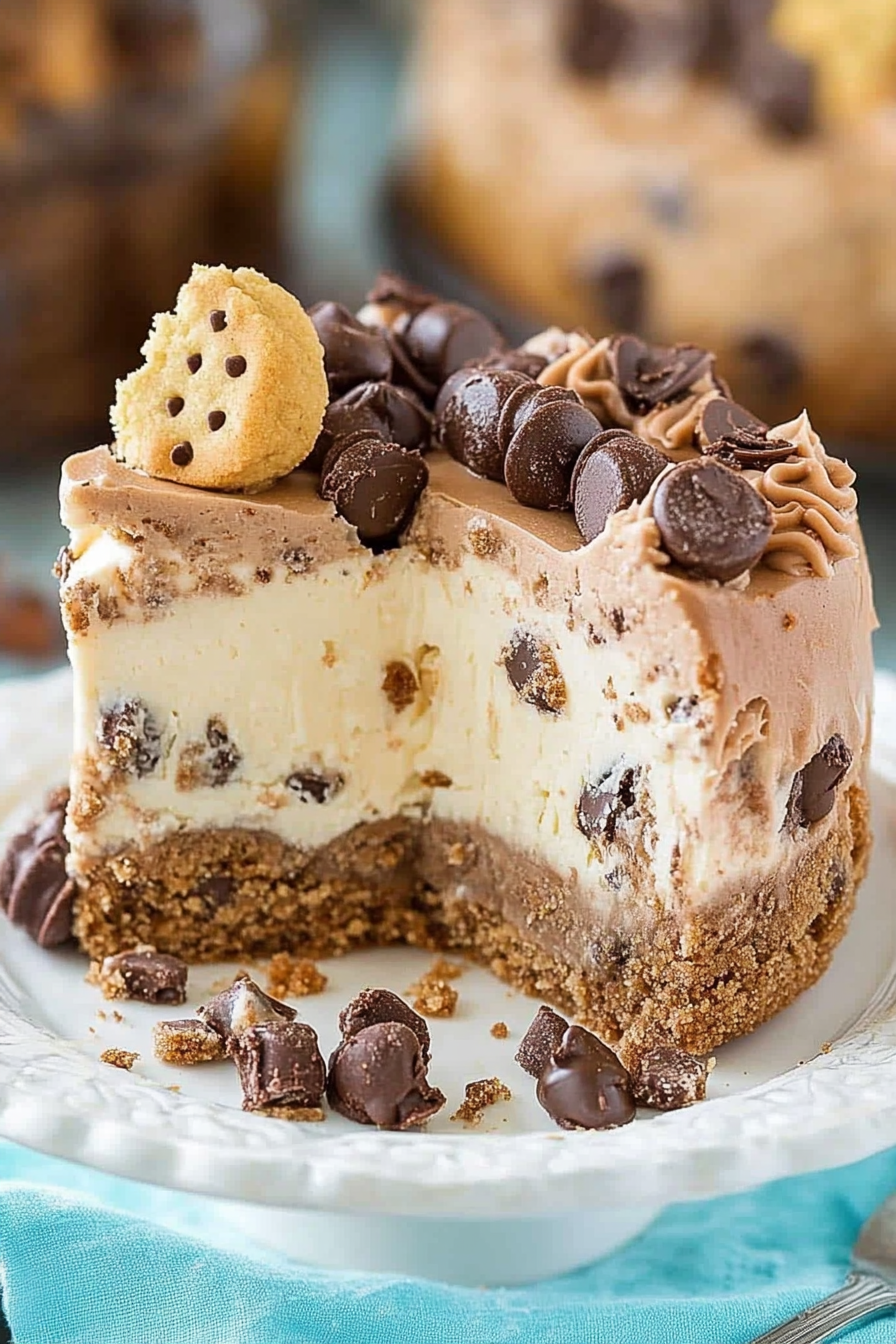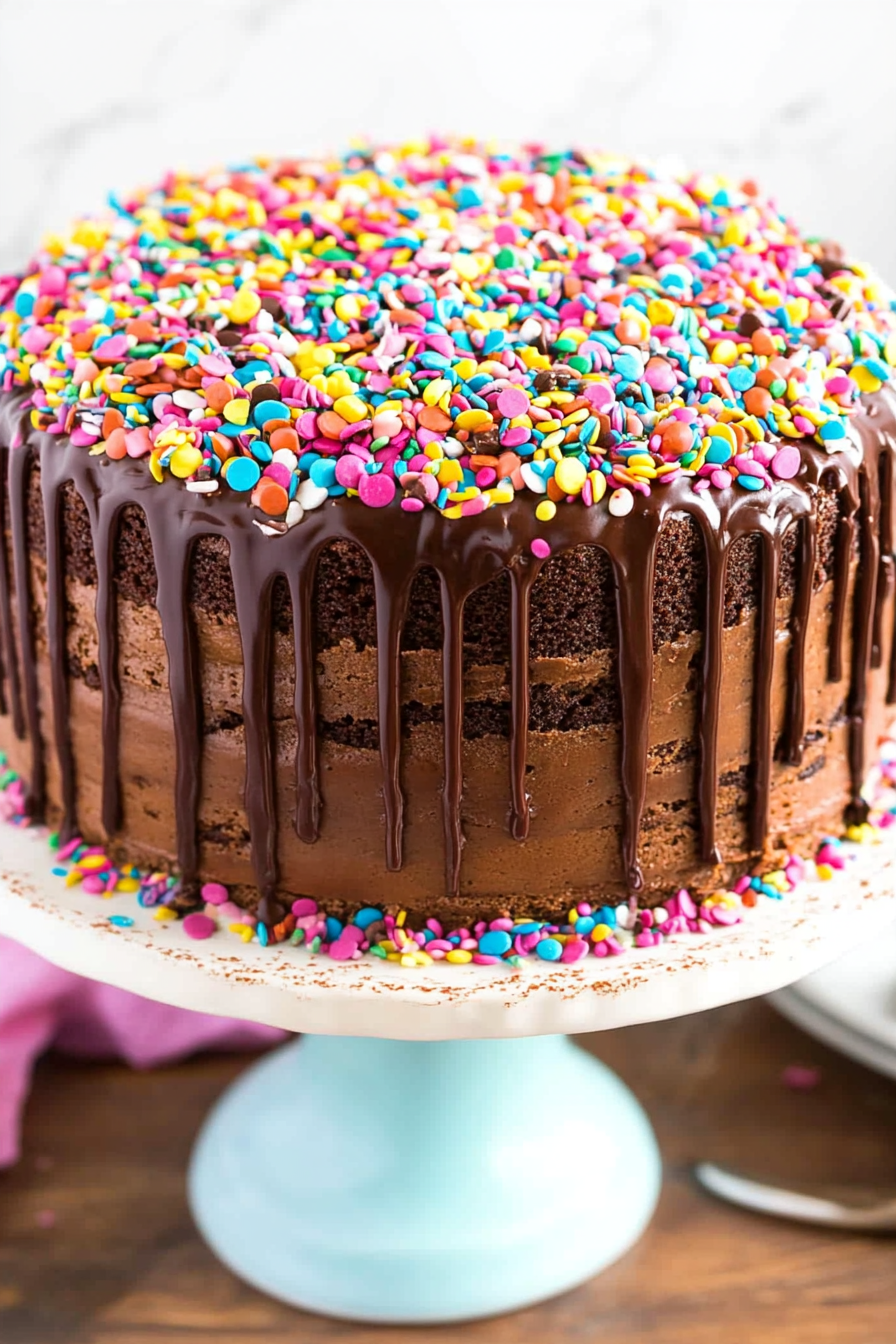I still remember the scent of vanilla and caramel drifting through grandma’s kitchen the moment the oven door opened. It wasn’t just a dessert; it was a ritual that wrapped everyone in toasty nostalgia and sticky sweetness. This custard Bread Pudding is that memory in a bowl—soft, custardy, a little Caramel Heaven on a cool autumn evening. It’s the kind of recipe that doesn’t demand perfection, just a few honest steps and a willingness to watch bread soften into creamy bliss. If you’ve ever compared it to a bread pudding made with stale challah or brioche, you know how much the custard hugs those fluffy bread cubes. I’ll tell you a secret: this custard bread pudding shines with day-old bread, because it soaks up every drop of that vanilla-egg-winey mixture and still stays light. It’s a crowd-pleaser, a lifesaver on busy nights, and my kids’ quiet request whenever there’s a chill in the air. Let’s bake something that smells like comfort and feels like a hug in a dish.
What is custard bread pudding?
Think of custard bread pudding as a gentle, cozy marriage between bread puddings and creamy custard. It’s essentially a custard-soaked bread bake—think bread cubes lounging in a silky mixture of eggs, milk, sugar, and vanilla, with a few optional flavors swirled in. The name itself hints at the star: custard, that lush, pourable cream that becomes soft and pudding-like when baked. This dish is the kind of dessert you can pull together on a weeknight and still feel spoilt on a weekend, because the bread acts as a sponge for the custard, soaking up every fragrant note. The origin story is simple and homey: small-town kitchens, stale bread rescued with a sweet, rich custard, and a slow bake that yields a sliceable, slice-worthy dessert. It’s essentially comfort in a dish, with room to customize—a little cinnamon here, a drizzle of caramel there, and you’ve got a dessert that tastes like you spent hours fussing, even when you didn’t.
Why you’ll
What I love most about this custard bread pudding is how forgiving it is without ever feeling dull. It’s not finicky, but it rewards you with a deeply creamy center and a lightly crisp edge that’s almost caramelized. The flavor profile is warm and nostalgic—vanilla, a kiss of cinnamon, and that gentle sweetness that doesn’t scream sugar shock. It’s a dish that says, “Yes, you can cook with everyday ingredients and still feel fancy.” The bread, preferably day-old brioche or challah, soaks up the custard like a champ, turning into a soft, custardy core that’s just shy of pudding in texture. It also travels well: make it the night before, bake it in the morning, and you’ve got a warm, shareable dessert or a luxe breakfast-for-occasion dish. Budget-friendly, crowd-pleasing, and deeply satisfying, this custard bread pudding is the kind of recipe your future self will thank you for—especially on those busy weeks when you want something comforting with minimal effort. I’ve tested it with almond milk and a dash of lemon zest, and it actually made it even creamier and brighter. Trust me on this one—it’s a lifesaver.
How do you make custard bread pudding
Quick Overview
In a pinch, you can think of this as three simple acts: soak the bread, whisk the custard, and bake until the center wobbles just enough to say “hello.” You’ll whisk eggs with milk, cream, sugar, and vanilla until smooth, fold in bread cubes, and then pour everything into a buttered dish. If you’re feeling like a little drama, swirl in a Cream Cheese filling or a cinnamon-spiced ribbon. Bake low and slow so the custard sets evenly, then glaze while it’s warm so the topping clings to every slice. The result? A custard bread pudding that’s lush, cozy, and impossible to resist on chilly evenings or after Sunday dinner.
Ingredients
For the Main Batter:
- 6 large eggs, at room temperature
- 2 cups whole milk
- 1 cup heavy cream
- 3/4 cup granulated sugar (adjust to your sweetness preference)
- 2 teaspoons pure vanilla extract
- 1/2 teaspoon ground cinnamon (optional, but it echoes the fall flavor beautifully)
- A pinch of salt
- 6 cups day-old brioche or challah, crusts trimmed and cut into 1-inch cubes
For the Filling:
- 8 ounces cream cheese, softened
- 1/4 cup granulated sugar
- 1 teaspoon vanilla extract
- Optional: 1 tablespoon lemon zest or orange zest for brightness
For the Glaze:
- 1 cup powdered sugar
- 2-3 tablespoons milk (or more for drizzle)
- 1/2 teaspoon vanilla extract
- pinch of salt
- Optional: a drizzle of maple syrup or caramel sauce
Step-by-Step Instructions
Step 1: Preheat & Prep Pan
Preheat your oven to 350°F (175°C). Butter a 9-by-13-inch baking dish generously, and if you like, dust with a little extra cinnamon. The butter is doing double duty here—preventing sticking and adding a little gloss to the finished edges. If you’ve got a favorite baking spray with a touch of flour, that works too. Set the dish aside while you gather your bread and the custard.
Step 2: Mix Dry Ingredients
In a small bowl, whisk together the granulated sugar, salt, and cinnamon. This dry mix is a flavor booster that keeps the sweetness even. It’s the little trick I learned after burning through a few batches where the edges got too sweet or the middle tasted flat. The dry-sugar-spice combination is the secret to a balanced custard bread pudding.
Step 3: Mix Wet Ingredients
In a large mixing bowl, whisk the eggs until they’re smooth and pale. Then whisk in the milk, cream, vanilla, and the dry mix. You want a silky custard that’s not too thin. If your fridge is cold, let the mixture sit for 5–10 minutes to come together; this helps the air bubbles settle, giving you a creamier texture once baked.
Step 4: Combine
Pour a third of the custard over the bread cubes in the dish. Toss gently to begin soaking, then repeat with the rest of the custard. You want every bit of bread to drink up the custard, but you don’t want soggy mush. If you’re using the bread that’s a touch drier, you’ll notice it soaks up more; that’s exactly what you want. Letting the mixture sit for 10–15 minutes before baking gives the bread time to plump and swell, which makes a big difference in texture.
Step 5: Prepare Filling
For a luscious ribbon or swirls, mix the softened Cream Cheese with sugar and vanilla until smooth. If you’re feeling extra cozy, add lemon zest for a bright, citrusy pop that works beautifully with the vanilla. Dollop or swirl the cream cheese mixture through the bread mixture in streaks. You can swirl in a few large patterns or do a gentle marbled effect—either way, it makes the final slice look as gorgeous as it tastes.
Step 6: Layer & Swirl
Scatter the bread into an even layer and lightly press down so the loaf covers the bottom. If you swirled in the Cream Cheese, use a knife to create gentle curves and marbling. The visual contrast is part of the charm—your slices will reveal delicate ribbons of cream cheese baked into the custard.
Step 7: Bake
Set the dish in the center of the oven and bake for 45–60 minutes. If you see the top browning too quickly, tent it with foil for the last 15–20 minutes. The center should be just set but still a touch wobbly—it will continue to firm as it rests. If you’re using a meat thermometer, aim for an internal temperature around 165°F (74°C). The edges will be deeply bronzed and the scent will make your kitchen feel like a café in the best possible way.
Step 8: Cool & Glaze
Let the custard bread pudding cool for about 15–20 minutes before glazing. A warm glaze clings to the surface and soaks gently into the top layer. Whisk together powdered sugar, milk, vanilla, and a pinch of salt until you reach a pourable consistency. If you want a slightly richer finish, replace a tablespoon of milk with a tablespoon of cream. Drizzle over the warm pudding so your glaze sets just right and doesn’t slide off in a messy puddle.
Step 9: Slice & Serve
Slice into generous squares and serve warm. If you’ve got a scoop of vanilla Ice Cream or a dollop of softly whipped cream, add it on top for extra contrast and a temperature play that makes every bite feel like a little party. The crusty edges should offer a gentle resistance, while the center stays velvet-soft. My friends swear the first bite tastes like a custard-rich cloud with a kiss of cinnamon. It’s the kind of dessert that disappears from the plate in minutes—trust me, I’ve watched it happen more times than I can count.
What to Serve It With
This custard bread pudding is flexible enough to slide into breakfast, brunch, or dessert with ease. Here are a few ideas that keep the cozy vibe alive:
For Breakfast: Serve in thick slices with a hot mug of coffee or chai. A light dusting of cinnamon on top and a drizzle of maple syrup makes it feel indulgent without being heavy. I love pairing it with fresh berries for a pop of brightness that wakes up the flavors.
For Brunch: Plate with a poached pear half and a splash of caramel sauce. A dollop of lightly sweetened whipped cream can balance the richness and add a festive touch for guests.
As Dessert: Pair with a glass of late-harvest wine or a strong espresso. The contrast of bittersweet coffee with the custardy sweetness is magical. You can also add toasted pecans or walnuts for extra crunch and a nutty backdrop.
For Cozy Snacks: Rewarm portions gently on the stove or in a low oven and sprinkle with a pinch of flaky sea salt to awake the flavors. A mint leaf or a citrus zest twist can offer a refreshing finish if you’re snacking late at night.
My family has a ritual around this dish—the first slice goes to Grandpa, who swears the bread took on his favorite bakery’s character in the best possible way. The kids beg for seconds, and the warm, vanilla aroma tends to draw everyone into the kitchen like a magnet. It’s a simple dish, but it creates moments you’ll remember long after the pan is cleaned.
Top Tips for Perfecting Your custard bread pudding
Here are a few practical tricks I’ve learned over the years to ensure you’ll get a perfect slice every time.
Bread Prep: Use slightly stale or day-old bread. Fresh bread soaks up less of the custard and can end up soggy. If you must use fresh bread, toast the cubes lightly to dry them out a bit before soaking. I keep a bag of day-old brioche on hand just for this; it makes the custard feel luxurious without extra effort.
Mixing Advice: Don’t overmix the wet and dry ingredients once they’re combined. A few gentle folds to combine are plenty. Overmixing can break down the bread’s structure and turn the texture gummy. Aim for a smooth custard with small air pockets rather than a perfectly homogenous batter.
Swirl Customization: The cream cheese swirl is optional but addictive. If you skip it, you’ll still get a wonderful pudding—just add a touch more vanilla or a pinch of nutmeg to deepen the flavor. For a fruit-forward version, fold in a handful of chopped dried figs or a spoon of orange marmalade in the batter before baking.
Ingredient Swaps: You can swap half of the whole milk for almond milk or coconut milk for a dairy-free version, but keep the cream to maintain that lush mouthfeel. If you’re avoiding eggs, you can use a blended mixture of equal parts silken tofu and plant milk, but the texture will be different—still delicious, just a bit lighter.
Baking Tips: Bake low and slow to prevent a dry, browned top with a pale, pudding-like center. If your oven runs hot, lower the temperature by 25 minutes and cover the top with foil halfway through. Center tests with a knife or toothpick—when it comes out with a few moist crumbs, you’re in business.
Glaze Variations: The glaze can be simple or showy. Try a cinnamon-vanilla glaze, a citrus glaze with orange or lemon zest, or a salted caramel drizzle for a more adult finish. If you want to keep it lighter, dust with a bit of powdered sugar and a crack of flaky sea salt right before serving.
Over the years, I’ve learned that the magic is in the little adjustments—the softness of the bread, the patience to let it soak, and the way a warm glaze catches the edges as you slice. It’s a forgiving recipe that still rewards careful hands and a bit of affection in the kitchen. This one’s a go-to for family gatherings, potlucks, or a quiet Sunday night when you crave something comforting and real. My tip: keep a notebook of your favorite tweaks—whether you used almond milk, a citrus zest, or extra cream—and you’ll build a personal version that your family will request time and again.
Storing and Reheating Tips
Custard bread pudding keeps pretty well, which is part of why I reach for it so often. Here’s how I handle leftovers without sacrificing texture or flavor.
Room Temperature: If it’s cut into portions, you can cover the dish with a clean kitchen towel and keep it on the counter for up to 2 hours. Beyond that, it’s better in the fridge. The thing about custard bread pudding is that the texture can firm up a bit at room temperature, so if you’re serving guests, warm slices gently to revive the custardy center.
Refrigerator Storage: Store any leftovers in an airtight container for up to 4 days. Reheat gently in the oven (covered) at 325°F (165°C) for 15–20 minutes, or until warm. You can also reheat individual portions in the microwave for 30–60 seconds, though the crust won’t be as crisp.
Freezer Instructions: Freeze unbaked bread pudding in a buttered dish, tightly wrapped, for up to 2 months. Thaw overnight in the fridge and bake as directed. For baked leftovers, freeze in individual portions wrapped tightly; reheat covered at 300–325°F (150–165°C) until warmed through. The texture may be a touch denser after freezing, but the flavor remains wonderful.
Glaze Timing Advice: If you’re freezing, you may prefer to add the glaze fresh after reheating rather than freezing with it. The glaze locks in a shiny finish when applied to a warm, freshly baked slice, and you’ll notice the contrast in temperature becomes part of the experience.
Frequently Asked Questions
Final Thoughts
This custard bread pudding isn’t just a dessert; it’s a little ritual you can bring to your table any time you crave warmth, nostalgia, and something that feels like a hug from the inside out. I’ve watched friends and family lean in as the scent fills the room, and I’ve seen the quiet comfort it brings on rainy evenings and busy days alike. The beauty is in the simplicity—stale bread, eggs, milk, and a little vanilla—and the way those few ingredients become something that tastes like home. If you’re new to bread puddings, start with day-old brioche and keep the glaze glossy but not runny. If you’re a seasoned bread pudding lover, experiment with swirls, zest, or a splash of orange liqueur to create a version that’s uniquely yours. Either way, I’d love to hear how yours turns out. Drop a comment, rate the recipe, or share your own twists. Happy baking!

Classic Custard Bread Pudding
Ingredients
Main Ingredients
- 6 slices stale bread any kind like challah, brioche, or French bread
- 3 cups milk whole milk recommended
- 0.5 cup granulated sugar
- 3 large eggs
- 1 teaspoon vanilla extract
- 0.5 teaspoon ground cinnamon
- 0.25 teaspoon nutmeg
- 2 tablespoons butter melted, for greasing dish
Instructions
Preparation Steps
- Preheat your oven to 350°F (175°C). Grease a 9x13 inch baking dish with melted butter.
- Tear or cut the stale bread into bite-sized pieces and spread them evenly in the prepared baking dish.
- In a large bowl, whisk together the milk, granulated sugar, eggs, vanilla extract, cinnamon, and nutmeg until well combined.
- Pour the custard mixture evenly over the bread pieces, ensuring all pieces are moistened. Gently press down on the bread to help it soak up the liquid.
- Let the mixture sit for at least 15-20 minutes to allow the bread to soak up the custard. You can also cover and refrigerate it for longer, up to a few hours.
- Bake in the preheated oven for 45-55 minutes, or until the bread pudding is set and golden brown on top. A knife inserted near the center should come out clean.
- Let the bread pudding cool for a few minutes before serving. It can be served warm or at room temperature.
Notes
Featured Comments
“Impressed! Clear steps and perfect for busy nights results. Perfect for busy nights.”
“New favorite here — creamy. crowd-pleaser was spot on.”
“Super easy and turned out amazing! My family asked for seconds. Saving this one.”
“This sweet treat was absolutely loved — the hearty really stands out. Thanks!”
“Made it tonight and wow — spot on! Will definitely make custard bread pudding again.”
“Packed with flavor and so simple. Exactly what I wanted from custard bread pudding.”












